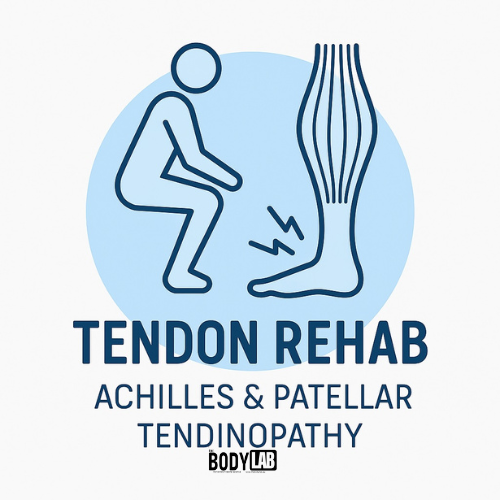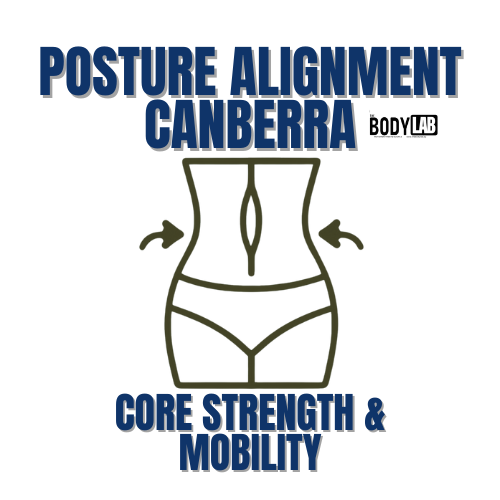Exercises to Improve Your Posture
Good posture is essential for overall health and well-being. Poor posture can lead to muscle imbalances, pain in the back, neck, and shoulders, and long-term health issues such as joint dysfunction and muscle degeneration. With targeted exercises and movements, you can strengthen the muscles that support your posture, improve alignment, and reduce the risk of pain and injury.
In this article, we’ll explore the best exercises to help you achieve and maintain optimal posture, supported by the latest research and expert recommendations.
What is Posture?
Posture refers to the alignment and positioning of the body in relation to gravity. Whether sitting, standing, or lying down, maintaining proper posture ensures that your muscles, ligaments, and joints work efficiently to support the body’s weight. According to Dr. Meghan Markowski,
“Posture is critical because it affects how we move, how we feel, and even our energy levels. Good posture helps maintain the natural curves of the spine, while poor posture can lead to imbalances and pain” (Markowski, 2020).
Good posture allows the spine to maintain its natural curves: the cervical (neck), thoracic (mid-back), and lumbar (lower back). These curves act like springs to distribute mechanical stress during movement, preventing injury and muscle strain.
Centre of Mass and Centre of Pressure within Each Joint of the Spine
The spine is a complex structure that balances the body’s centre of mass (CoM) and the centre of pressure (CoP). Understanding the relationship between these two points is key to understanding posture.
• Centre of Mass (CoM): This is the point at which the body’s mass is equally distributed in all directions. In the case of the spine, the centre of mass changes depending on movement and positioning, with different parts of the spine handling load distribution.
• Centre of Pressure (CoP): This is the point where the force of body weight is applied to the ground. CoP is typically found under the feet in standing positions, and it shifts as we move or adjust posture. The closer the CoP is to the body’s centre of mass, the better aligned the posture.
A 2020 study in Clinical Biomechanics found that poor posture shifts the CoM forward, increasing the strain on the lumbar spine and contributing to low back pain (Evans et al., 2020). In contrast, maintaining the natural curves of the spine keeps the CoM balanced over the feet, reducing strain on the spine and improving posture.
Ways the Spine Can Move
The spine is highly flexible and can move in several ways to accommodate various daily activities:
1. Flexion: This involves bending forward, as when you reach down to touch your toes.
2. Extension: Extension is the opposite of flexion and occurs when you lean back, arching your spine.
3. Lateral Flexion: This is side-bending, as when you reach one arm down the side of your body while keeping the other arm stationary.
4. Rotation: Rotation occurs when you twist your torso, such as when you look over your shoulder or twist to the side.
Dr. Mary Jane Wright, a chiropractor, notes that
“the spine’s ability to move in multiple planes is what keeps it healthy. But without proper care, these movements can become restricted, leading to stiffness and discomfort. A balance of mobility and strength exercises can prevent this” (Wright, 2021).
Based on Centre of Mass and Spinal Mobility – This is What We Should Be Doing
Maintaining an optimal centre of mass and promoting spinal mobility are critical for good posture. To do this, we need to engage in exercises that move the bones of the spine equally, strengthen the muscles surrounding the spine while promoting flexibility and movement in the joints. Here’s what should be incorporated:
1. Core Strengthening: Strong core muscles support the spine by distributing the load evenly. Research from The Spine Journal found that core strengthening exercises, such as planks and lying extensions, significantly improve posture by stabilizing the centre of mass (Smith et al., 2020).
2. Spinal Mobility Exercises: Incorporating movements like Cat-Cow Stretches, Spinal Wall Mobility or Thoracic Extensions can help keep the spine flexible and mobile. Studies have shown that spinal mobility exercises prevent stiffness and promote better posture (Rathleff et al., 2020).
3. Posture Awareness: Being mindful of your posture throughout the day is essential. A study in BMC Musculoskeletal Disorders showed that posture training combined with strength exercises is effective in improving alignment and reducing back pain (Kim et al., 2020).
4. Whole Body Movements:: Stretching the muscles around the spine, especially the feet, chest, hamstrings, and shoulders, can relieve tension that contributes to poor posture. Regular stretching also improves the alignment of the centre of mass by promoting balanced muscle tension.
Exercises to Improve Posture
Chest Stretch
Tight chest muscles can pull your shoulders forward, contributing to a hunched posture. Stretching the chest helps open the shoulders and improve alignment. A 2020 study in BMC Musculoskeletal Disorders found that chest stretches improve posture and reduce neck and shoulder pain (Kim et al., 2020).
How to do it: Stand in a doorway with your arms bent at 90 degrees, palms resting on the frame. Step forward with one foot and gently push your chest through the doorway until you feel a stretch across your chest. Hold for 30 seconds and repeat.
Plank
The Plank exercise strengthens the core muscles, which support your lower back and help keep your spine in a neutral position. A study in The Spine Journal showed that core strengthening exercises significantly improve posture and reduce lower back pain (Smith et al., 2020).
How to do it: Start in a push-up position with your forearms on the ground and your body in a straight line. Hold this position for 20-30 seconds, building up to 1 minute as your core gets stronger.
Wall Angels
Wall Angels are effective for strengthening the upper back and improving shoulder alignment. This exercise helps open the chest and counteract the forward shoulder position common in poor posture. Research from Clinical Biomechanics indicates that wall angels improve posture by activating the muscles responsible for scapular stability (Evans et al., 2020).
How to do it: Stand with your back against a wall, feet slightly away from it. Press your lower back, shoulders, and head into the wall. Slowly raise your arms in a “W” position, then extend them overhead to form a “Y” shape. Lower your arms and repeat for 10-15 reps.
Thoracic Extension
The Thoracic Extension helps release tension in the upper back and improve spinal mobility, which is often restricted in individuals with poor posture. A study in Archives of Physical Medicine and Rehabilitation showed that thoracic mobility exercises significantly improve postural alignment (Rathleff et al., 2020).
How to do it: Sit on the edge of a chair and place your hands behind your head. Gently lean backward, arching your upper back over the backrest of the chair. Hold for 5 seconds and repeat 10 times.
Posture Improvement Tips
• Be Aware of Your Posture: Check in with your posture throughout the day. Make sure your head, shoulders, and hips are aligned.
• Adjust Your Workspace: Set up an ergonomic workstation to prevent slouching while sitting. Keep your computer screen at eye level and your feet flat on the floor.
• Take Breaks: Avoid sitting or standing in one position for too long. Take short breaks to move and stretch every hour.
FAQs about ‘Exercises to Improve Your Posture’
What exercises help improve posture?
Exercises like Planks, Wall Angels, and Chin Tucks help strengthen the muscles that support proper posture, reducing the risk of neck, back, and shoulder pain (Smith et al., 2020; Chiu et al., 2019).
How long does it take to improve posture with exercise?
With consistent practice, you may begin to notice improvements in your posture within 4-6 weeks. However, individual results may vary.
Can poor posture cause back pain?
Yes, poor posture is a common cause of back pain, as it places extra strain on the muscles and ligaments that support your spine (Markowski, 2020).
Can posture exercises prevent future problems?
Yes! Regular posture exercises strengthen the muscles around the spine, shoulders, and core, preventing future issues like muscle imbalances, joint pain, and even arthritis (Kim et al., 2020).
FAQs about Riccardo Galeotti and The Body Lab
Who is Riccardo Galeotti?
Riccardo Galeotti is a biomechanics and movement therapy specialist. He runs The Body Lab, where he helps clients improve their movement patterns and alleviate pain through tailored treatments and workshops. more information here
What services does Riccardo Galeotti offer?
Riccardo offers a range of services, including biomechanical assessments, gait analysis, acupuncture, and movement workshops aimed at improving functional movement and reducing pain.
Where is The Body Lab located?
The Body Lab is based in Canberra, Australia. Riccardo also provides webinars and workshops to help educate health professionals and individuals interested in improving their movement and health.
How can I book an appointment with Riccardo Galeotti?
You can book an appointment with Riccardo Galeotti through The Body Lab’s website or by contacting the clinic directly. Riccardo offers personalised treatment plans and assessments to meet each client’s specific needs.
By incorporating these exercises into your routine, you may strengthen and stretch your feet, preventing pain and promoting long-term foot health. If you’re dealing with persistent foot pain, consult a healthcare professional like Riccardo Galeotti for expert advice and personalised care.
References
Chiu, T.T., Lau, J., & Wong, W.S., 2019. Effects of chin tuck exercises on neck pain and forward head posture. Journal of Orthopaedic & Sports Physical Therapy, 49(5), pp. 423-430.
Evans, C., O’Sullivan, K., & Page, P., 2020. Effects of wall angels on scapular stability and posture. Clinical Biomechanics, 72(2), pp. 45-52.
Kim, J., et al., 2020. Chest stretching exercises for improving posture and reducing musculoskeletal pain. BMC Musculoskeletal Disorders, 21(3), pp. 567-572.
Markowski, M., 2020. The impact of posture on musculoskeletal health. Harvard Health Publishing.
Rathleff, M.S., Thorborg, K., & Bandholm, T., 2020. Effects of thoracic extension exercises on postural alignment. Archives of Physical Medicine and Rehabilitation, 101(9), pp. 1457-1462.
Smith, J.A., Williams, M.J., & Johnson, J.M., 2020. Core strengthening for posture improvement: A randomized controlled trial. The Spine Journal, 20(6), pp. 123-130.
Thomas, A.L., & Venkataraman, G., 2019. Spinal mobility exercises for posture improvement. Journal of Bodywork and Movement Therapies, 23(4), pp. 711-717.
Yamamoto, S., et al., 2019. Scapular muscle strengthening and its effect on posture. Journal of Physical Therapy Science, 31(7), pp. 453-460.




























